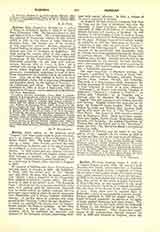

Barcena (also BARZANA), ALONZO DE, a native of Baeza in Andalusia, Spain, b. 1528; d. at Cuzco, Peru January 15, 1598. He became a Jesuit in 1565, and went to Peru in 1569. He was first destined for the missions of Huarochiri, whence he was ordered (1577) to Juli, on the shores of Lake Titicaca in Southern Peru. He became one of the founders of this important mission. Barcena remained in Central Bolivia for eleven years, when the Provincial Atienza sent him to Tucuman in Argentina. His work among the various tribes of that region and of Paraguay continued until 1593, when he was made Commissary of the Inquisition in those provinces. Exhausted physically by his long and arduous labors, Barcena died at Cuzco in Peru. He is credited with having had a practical knowledge of eleven Indian languages and with having written grammars, vocabularies, catechisms in most of them. These manuscripts are possibly still in the archives of Lima. Only one of his writings is known to have been published: a letter full of important ethnographic and linguistic detail, on the Indians of Tucuman, on the Calchaquis, and others. The letter (see below), published in 1885, is dated September 8, 1594, at Asuncion in Paraguay, and is addressed to the Provincial Juan Sebastian.
AD. F. BANDELIER

